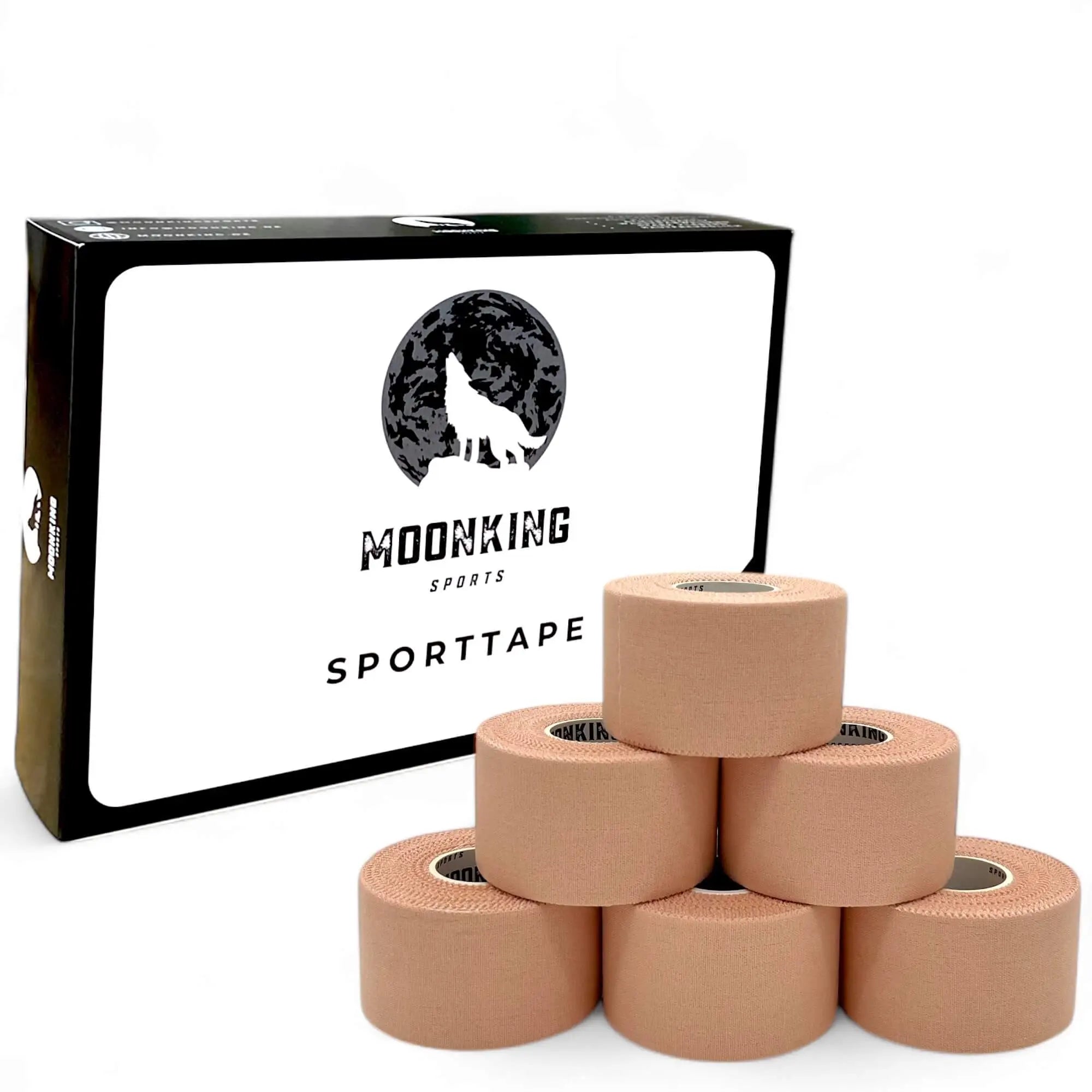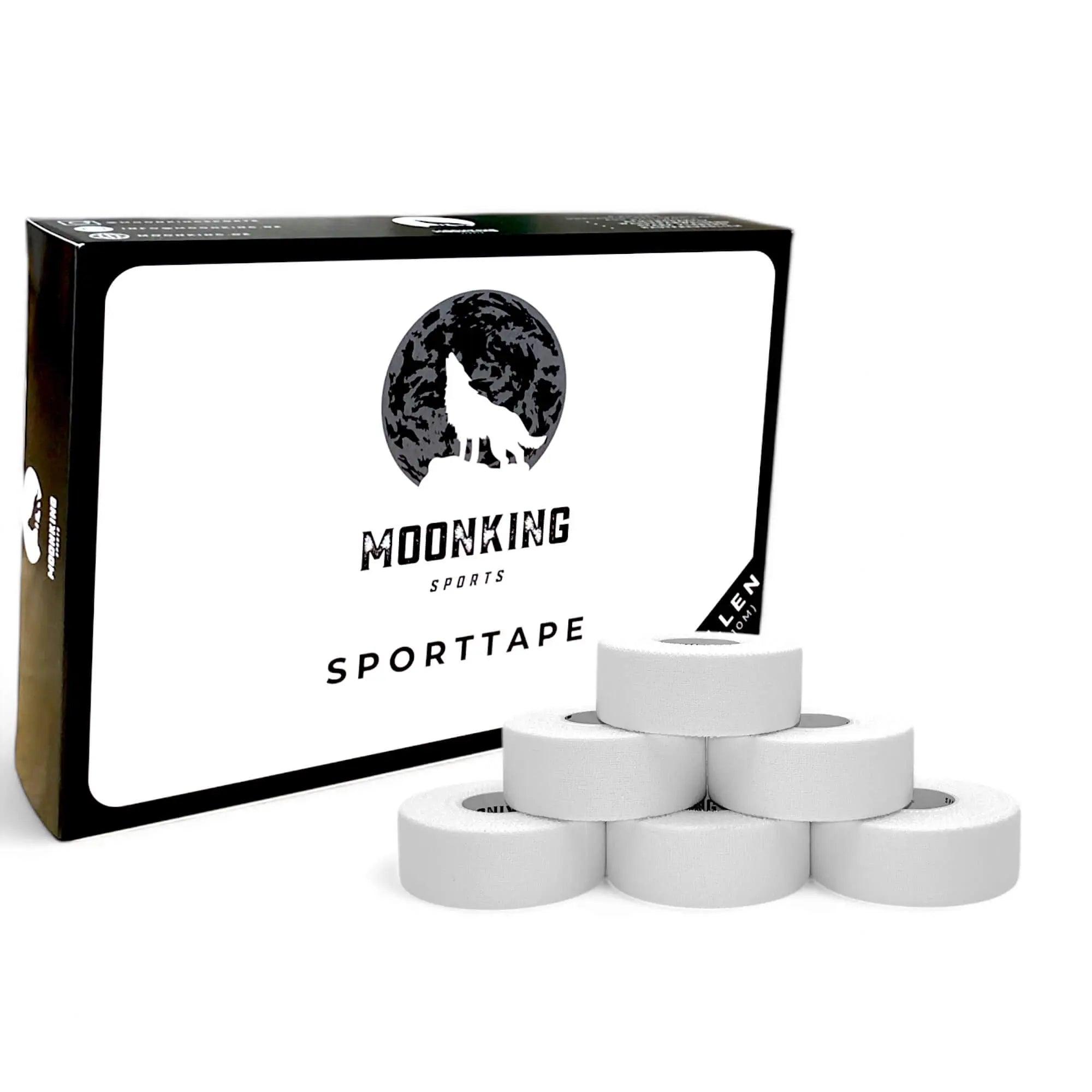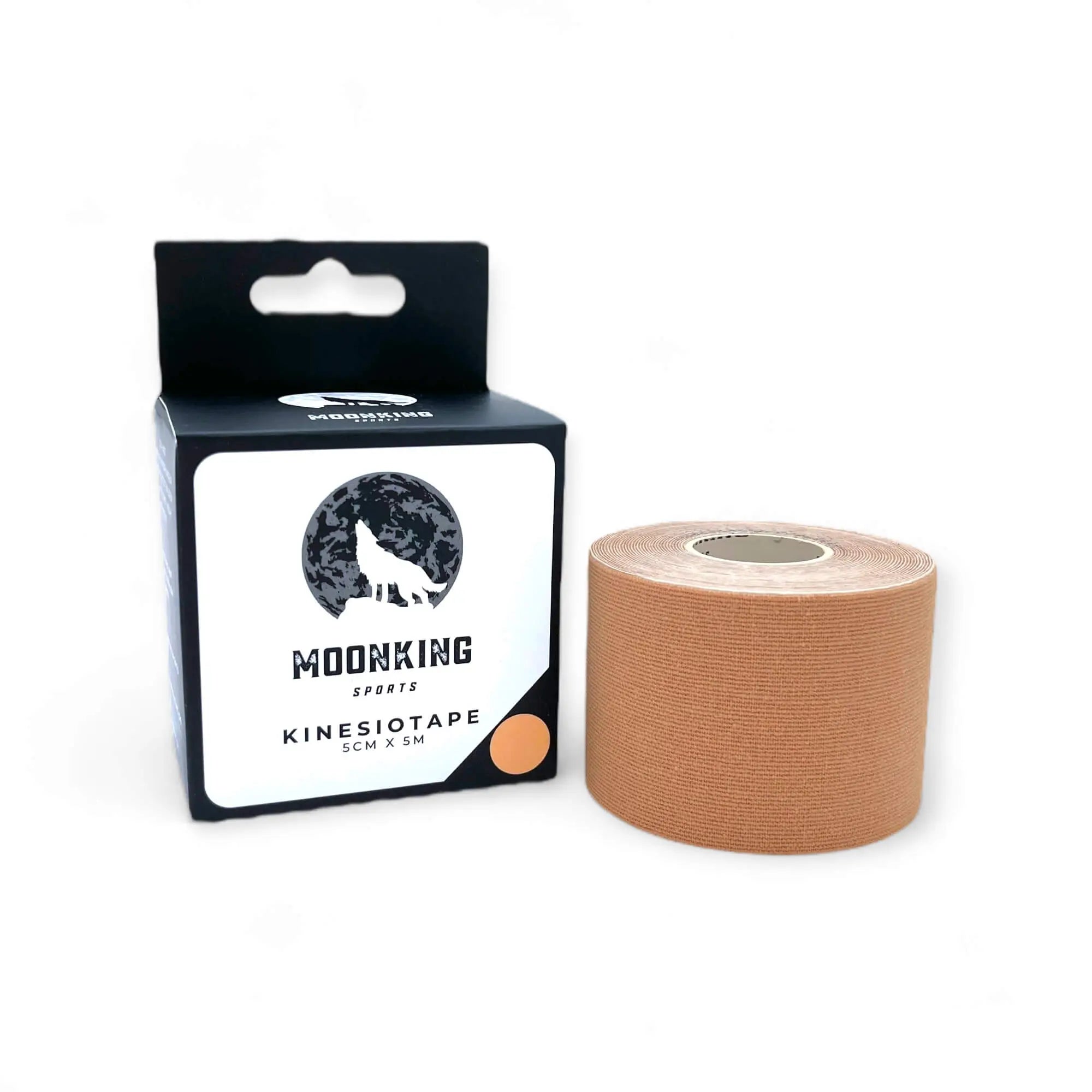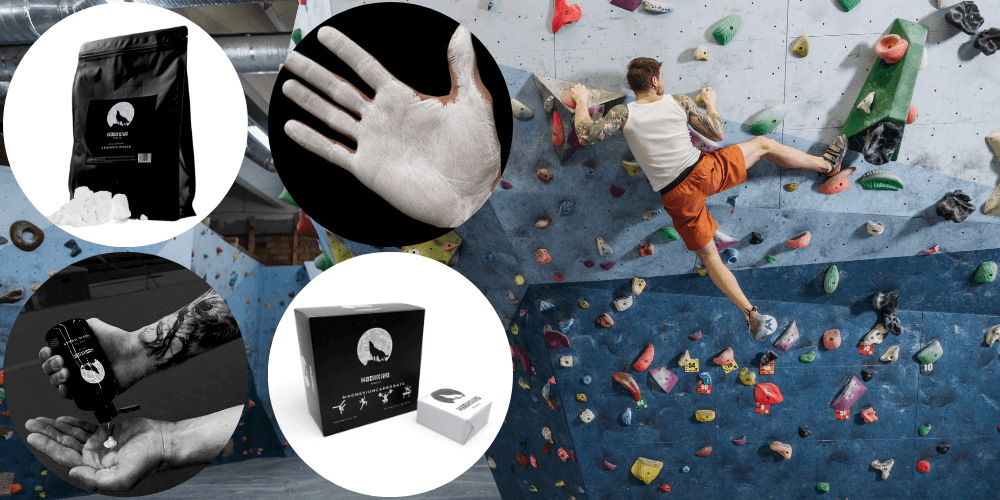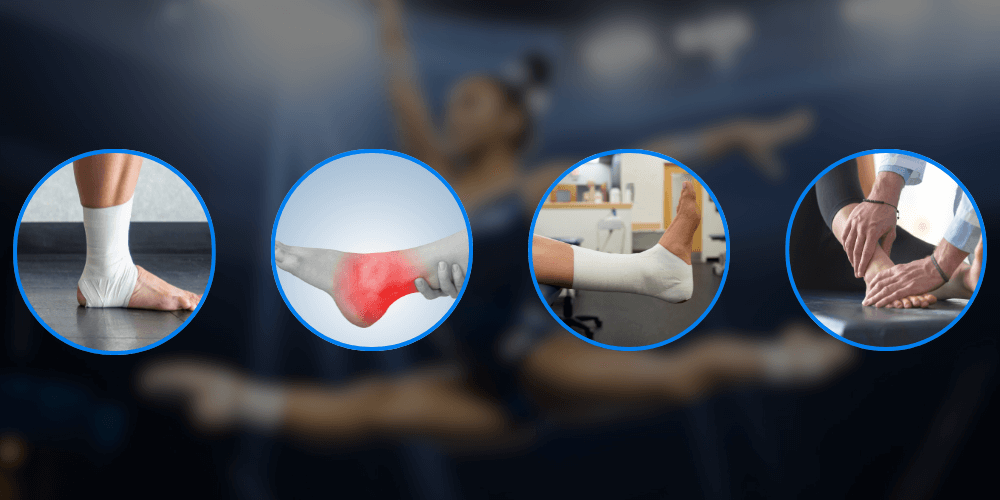Taping the shoulder correctly – your introduction to effective kinesiotaping in gymnastics
Shoulder taping, kinesio – this keyword alone demonstrates how many athletes are looking for solutions to shoulder pain, instability, and overload. And rightly so: In gymnastics, the shoulder is exposed to extreme stress. Whether it's during a swing on the high bar, somersaults on the trampoline, or complex pyramids in sports acrobatics – the shoulder is constantly under pressure .
At MoonKing Sports, we know how important it is to act promptly to avoid injuries . That's why we've created this comprehensive guide: so that beginners know how to properly tap their shoulders with kinesiology tape , what to look for, and how to incorporate tape into their training routine.
Our goal is to provide you not only with knowledge but also with the right products – for maximum effect and a strong body feeling during every workout.
Why taping your shoulder with Kinesio?
Kinesio tape isn't a "fashion gadget," but a medically proven tool that has proven its worth in professional and recreational sports for years. When taping the shoulder, Kinesio tape is applied to the skin in such a way that it:
-
Muscles supported,
-
Joints stabilized,
-
Relieves pain and
-
activates the body's self-healing powers.
What's special about it? It doesn't restrict you. You retain your full mobility – perfect for dynamic sports like gymnastics, trampoline, or acrobatics.
Beginners in particular benefit enormously from starting taping early – preventatively , but also at the first signs of overload .
The shoulder – an injury-prone all-rounder
Our shoulder is a true talent for movement. No other joint structure in the body is as mobile—but at the same time, as susceptible to:
-
instability
-
overload
-
Irritations and inflammations
-
Muscle shortening
-
Poor posture and imbalances
Especially in gymnastics, the shoulder is often exposed to a combination of pressure, tension, rotation, and leverage . If recovery is neglected or technical errors occur, the risk is high.
That's why many athletes—including our team—rely on kinesiotaping as an integral part of preventative care . Tape can make a difference, especially when training new elements or during competitions.
The most common shoulder problems – and how tape helps
1. Impingement syndrome:
Friction under the acromion, pain during overhead movements.
→ Tape relieves pressure on the area, slightly lifts the humeral head, and reduces pain.
2. Rotator cuff irritation:
Typically used during intense exercise, such as on the rings or during handstands.
→ Tape stabilizes and improves blood circulation in the muscles.
3. Instability due to hypermobility:
Especially for sports acrobats or gymnasts with “soft” joints.
→ Tape offers “gentle resistance” and tactile guidance.
4. Bursitis:
Painful, usually due to overexertion.
→ Tape can help reduce inflammation.
When is shoulder taping Kinesio useful?
You can use kinesiology tape in many situations:
|
situation |
Use of kinesiology tape |
|
Before training |
Preventive to control stress |
|
At the first pain |
Supportive to relieve irritation |
|
In regeneration |
To promote healing processes |
|
In competition |
For stability at maximum load |
|
After injury |
To enable a cautious return to training |
In our shop you will find medically tested tapes that were specially developed for athletes – with strong adhesive, high skin compatibility and reliable performance.
How does kinesiology tape work?
The effect of kinesiotape is based on three main mechanisms:
-
Mechanical: Slight lifting of the skin, improvement of microcirculation.
-
Sensory: Irritation of receptors → pain reduction.
-
Proprioceptive: Improved body awareness, more active movement behavior.
Kinesio taping the shoulder creates a combination of mechanical support and neurological feedback. The result: less pain, more stability, and better movement.
How to find the right tape for your shoulder
Not every tape is the same. At MoonKing Sports, we pay attention to the following in our tapes:
✔ Strong, sweat-resistant adhesive
✔ Elasticity in several directions
✔ Breathable cotton structure
✔ Skin-friendly, latex-free materials
✔ Easy to use – even without physio
How to integrate kinesiology tape into your daily training routine
Kinesio tape is most effective when used not just selectively but as a permanent part of your training routine. Many athletes only use tape for acute pain—but the real benefit lies in its preventative use .
Here’s how you can use tape effectively:
-
Before intensive sessions as mental and physical preparation
-
For new elements or high loads for support and orientation
-
During competition phases as part of your preparation rituals
-
In regeneration for relief and better blood circulation
The benefit lies not only in the physical support but also in the increased body awareness . Many of our clients report that the tape helps them more accurately sense when a movement is "right" —or not.
When combined with clean techniques, a functional warm-up, and a good recovery strategy, kinesiology tape can be a real game changer—not just for your shoulder, but for your entire training experience.
And the best part: In our online shop, we not only offer the right tape, but also complementary products to complete your routine – from chalk to recovery tools. Take a look around; we have everything you need to reach your full potential.
Common mistakes – and how to avoid them
❌ Too much tension → skin irritation
❌ Moist skin → Tape does not stick
❌ Directly over open wounds → risk of infection
❌ Unsuitable tape → Ineffective
❌ No rubbing → adhesive not activated
✔ Tip: Only use tested, high-quality tape – like our products at MoonKing Sports.
How long does the tape last?
Good tape lasts when used correctly:
-
3–5 days in everyday life
-
2–3 days of intensive training
-
Even when showering – as long as you don’t rub or pull
Our MoonKing Sports Tape is waterproof and tear-resistant – ideal for active athletes.
Is tape only for professionals?
Clearly: No.
Many people think, "I'm not a professional – I don't need tape." But that's precisely a misconception. Beginners, in particular, benefit from:
-
Improving technology through tactile guidance
-
Pain prevention
-
More safety during training
Our products are suitable for all performance levels – from the first flick-flack to the national team.
What do our customers say?
"Tape holds really well – even during sweating and long workouts. I now tape before every workout."
– Jana, 16, competitive gymnast
"I had shoulder problems for a long time. The tape from MoonKing helped me noticeably."
– Max, 21, trampoline
“Finally, a tape that’s truly made for gymnasts.”
– Lara, 14, sports acrobatics
Follow us on Instagram for tutorials, tips, and community feedback!
Tips for combining with other tools
Want to get even more out of your training? Then combine kinesiology tape with:
-
Massage guns for targeted loosening
-
Cold/heat applications after training
-
Clean chalk for a secure grip
-
Routines for regeneration & mobility
You can find all of this in our shop – specially curated for gymnastics.
Conclusion: Shoulder taping Kinesio – simple, effective and indispensable
If you, as a gymnast, want to stay healthy and perform well in the long term, there's no way around shoulder taping with Kinesio . Whether preventative or for the treatment of discomfort, tape is a simple yet effective tool that will support you.
And we at MoonKing Sports are at your side. As a team of active athletes and coaches, we know what you need. Our products aren't "off the shelf" but developed specifically for your gymnastics needs .





